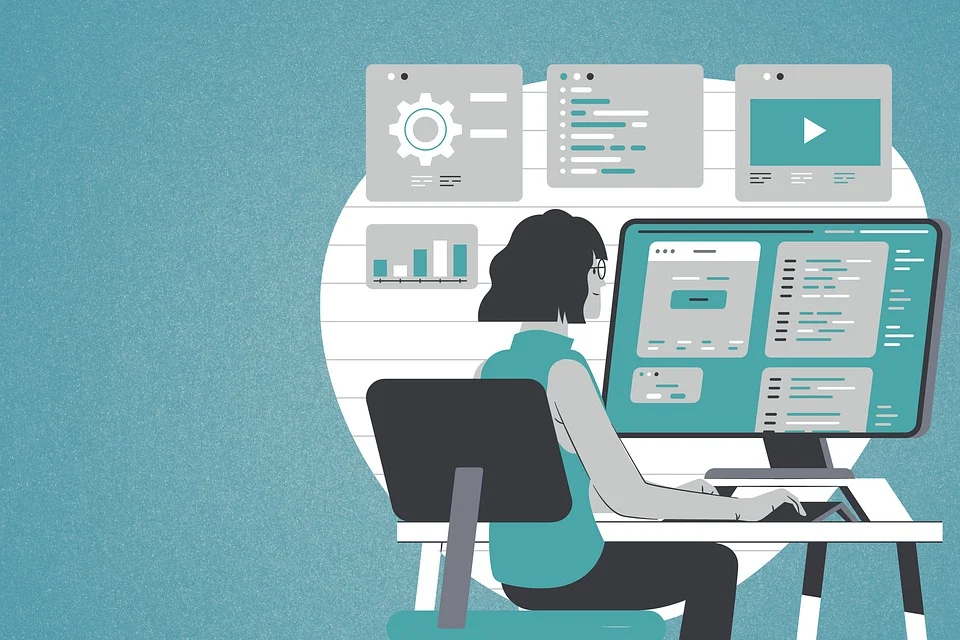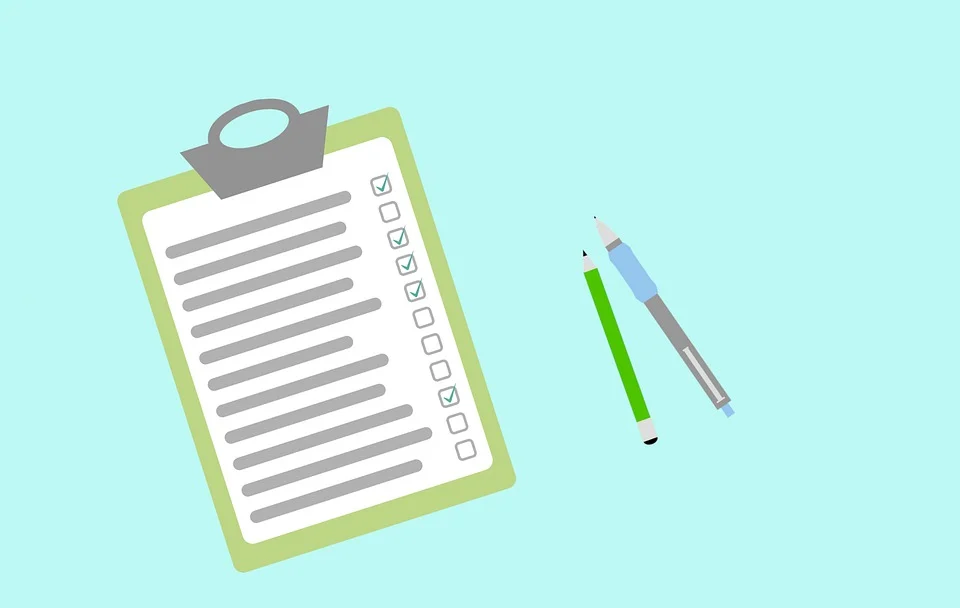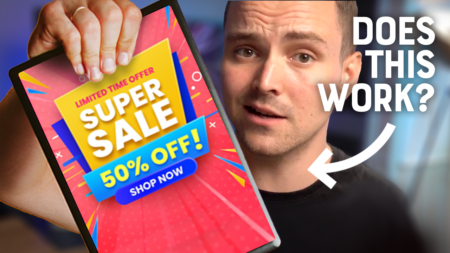Gathering pertinent information from a prospective client in your sales process can be crucial — this can be done during a discovery call. But what is a discovery call? And what does it accomplish in your sales process?
Sales is an ever-changing landscape with new techniques developed and practised all the time. Within this landscape, personalization has never been more important to clients, requiring custom-made solutions to niche pain points.
It makes sense—everyone wants to feel that businesses genuinely care about their problems and aren’t just churning out the same semi-relevant solutions to everyone.
However, creating a personalized sales experience can pose a challenge to sales departments globally. There are constraints on our time and resources that we have to work within while reaching as many potential clients as possible.
Money Note: If an extra $1K–$5K/month would change your 2026 goals (debt, savings, travel, freedom), you’ll want to catch this: free live workshop from a freelancer who’s earned $4M+ online. No fluff. No gimmicks. A real roadmap. 👉 Watch the training or save your seat here »
But how do we work out which paths to send different clients down, listening to their individual qualms and queries? Finding out what is a discovery call can be a great way of onboarding your clients and getting to know their needs.
What is a discovery call?
It’s not a sales pitch or a showcase of all your available services. A discovery call is a chance for asking questions and learning more about your clients upfront.
This can feel like it’s outside of the sales comfort zone, as there isn’t any product to push or purchase to secure by the end of the call. Instead, all you have to do is build up a detailed image of who you’re selling to, so that you can empathize with their problems and find personalized solutions for them.
Typically, discovery calls are used in a business-to-business setting, acting as the foundation of a hopefully mutually useful partnership, although they can be equally useful in attracting freelance clients.
They’re an opportunity to scout out your prospective clients and establish how viable working together towards a solution would be.
Rather than investing all your energy in a new business client who turns out to be looking for something you can’t provide, discovery calls make sure that both businesses are on the same page and talking about the same problems, contexts, and solutions. That’s why you should be able to answer what is a discovery call.
In this way, it’s just as much a chance for your clients to find out about you, your attitude to their problems, and your responses.
The impression you create is going to help other businesses decide whether it’s worth pursuing a solution with you or to look elsewhere. This puts a certain amount of pressure on you to get it right but, with our help, you’ll ace it every time.
What you need to know before making a discovery call
Hopefully, we’ve answered the question of what is a discovery call and what it’s about, leaving you ready to get started. However, before you pick up the phone, there’s some crucial preparation you should do first.
If you want your call to run smoothly and be a valuable use of time, you have to do your homework. The more work you put in beforehand, the better the questions you will be able to ask, and the more likely you’ll be successful in getting your client onboard.
It’s always embarrassing asking an obvious question, especially when you could have so easily found the answer through a quick scan of their business’ webpage or using a search engine.
Whatever business you’re calling, make sure you look through the information they already have available and prepare questions that you don’t already know the answer to. It’s good practice, and means you’re not wasting company time for either of you.
Also, make sure you have the right software available to make the call. No one enjoys a stuttering video call or audio calls with half the sound missing. Using a reliable voice and video calling platform means your discovery call can go ahead with minimal “can you hear me?” incidents and focus on the important stuff.

Taking care of the technical side of things isn’t always a priority, but it helps to set the right tone from the start and gives you one less thing to worry about.
How to structure a discovery call
As already mentioned, preparation is key to a discovery call, and having a structure can help keep things moving in the right direction.
One of the easiest ways to conduct a discovery call is using the SPIN model. It’s a way of selling and can also direct you to ask good questions in an order that makes sense. It sensitively uncovers the client’s pain points, before stepping in with alternative solutions.
The SPIN model starts with the Situation. Part of this you can uncover through your prior research or even through a client intake form but, in your call, continue to get to know who you are working with through your first few questions.
Find out what systems are already in place within their business and what they are for. This is your chance to identify if this company is likely to be a good match for your services and products.
Next, move on to the Problem. Be careful to respond sensitively as uncovering pain points can, unsurprisingly, be painful. Alternatively, it may need some encouragement from you to help uncover what your client’s pain points are, distinguishing them from mild annoyances. Asking open questions can help your clients to point out what their main problems are.
Subsequently, take a look at the Implications. When you’re used to dealing with an issue daily, you can forget how important it is and the ongoing ramifications of that issue.
Gently prompt your client to take these implications seriously, recognizing the impact of the problem both in the long term and short term for their business.
Finish with Need-payoff. This is where your sales expertise can shine, although, hold yourself back from doing a full-on pitch. Lead your client to decide for themselves what sort of solution they would look for to resolve their problem and where they might be able to find it. Emphasize what is to be gained by seeking these solutions, ending the call on an optimistic note.
Before you leave the call, offer your client an idea of the next steps. This might be looking into a trial, a follow-up call at a later date, or maybe talking to others in the right field. This keeps the communication lines open for further contact, as well as building their perception of you as an authority figure, leading your client to trust your judgment and follow your advice.
20 Questions to ask on a discovery call
You’ve got your plan in place to take you through the call, but the essential part you’re still missing is the questions.
The right questions can leave you buzzing from your discovery call, using these to weed out bad clients and highlight those with good potential. The wrong questions, however, may be detrimental both to your experience and future partnership.
An even spread of questions throughout helps to stop the discovery call from feeling like an interrogation and instead create an atmosphere of friends catching up. These questions should cover a range of topics, providing you with a holistic understanding of your client’s business and its pain points.

These generally fit into four main categories:
Background questions
These are the questions that fill in the information that your research was not able to do. Depending on the quality of their business website, you may already know a fair bit or, on the other hand, may not know anything at all.
Don’t fall into the trap of only asking questions, either—make sure to repeat back what they’ve said to show you’re actively listening and have your facts straight.
Some examples of background questions include:
- What do you do on a day-to-day basis?
- How does your company do X?
- Why did you choose this method?
- What sort of budget do you have in place for X?
- How did you hear about our work?
These questions may spark follow-up questions you hadn’t prepared for; that’s okay! It’s all part of getting to know the other business and sharing a bit of what your business is like.
The aim of these questions is simply to build a picture of what the client business is like understanding their situation (the first of the SPIN steps). You can use this information to also inform how you find future clients and understand the businesses you reach.
Priority questions
You need to know what’s important to the business you’re selling to. You can give the best pitch of your life but, if their priorities lie elsewhere, it’s all going to be in vain.
Likewise, if they have opposite values to your company, it might be time to reflect on what the future of this partnership is going to look like.
You might want to ask:
- What goals do you have for [a specific period]?
- What are your KPIs and how do you use them?
- Where are most of your budget directed?
- What areas do you want to save money on?
- How does your company act on its values?
Being able to provide solutions that are in tune with the client business’ values is going to make your suggestions far more likely to find a receptive audience. It also gives you a hint as to what your client will be looking for in a solution, as well as which of their challenges they are most keen to overcome. All this can come in handy later in the call.
Problem-centric questions
When identifying the problems your client is facing, it’s best not to assume too much, and a great way of avoiding this is by asking questions.
By focusing on problems and pain points, you can get plenty of detail about them as well as the solutions (or lack thereof) that are currently in place. These can formulate your response and how you plan to move ahead with the client business.
Try asking:
- What would you say is the biggest challenge facing your company currently?
- How do you manage that challenge?
- If you were unable to resolve that issue, how would the future look for your company?
- What resources (both material, financial, and in terms of the workforce) do you have at your disposal to tackle this with?
- How does this issue prevent you from reaching your goals and targets?
These questions can help to lean into the implications of the problems that face businesses. They emphasize the need to properly deal with these challenges to allow your clients’ business to flourish and thrive.
Be careful to reassure and support your client through these questions, as they can feel exposed when talking about business challenges. The questions are there to help them, not to shame them.
Solution questions
Starting to look at what’s next, solution questions determine what actions are going to be suited to the client business, how they expect to solve issues, and their flexibility and willingness to try a new approach.
The answers given here are going to help you personalize your suggestions so that they integrate well with the target business, as well as being good solutions to the challenges being faced.
Use some of these questions:
- What is a typical timeline for implementing a solution in your company?
- What is the ideal end goal of working with us?
- Once you have a solution, where are you looking to see improvement?
- Who needs to be involved in decisions regarding new solutions?
- What budget does your company have available for finding solutions?
Solution questions can help your client recognize what solutions they are looking for and, in turn, what they are hoping to get out of working with you.
This may present a role your business is unable to fill, in which case you need to evaluate how beneficial or achievable searching out solutions together is going to be. Alternatively, the answers here will make clear exactly how you can help and what strategies you can use.
Quick discovery call checklist
We’ve provided you with loads of information about what is a discovery call, its purpose, what to include in it, and how to structure it. It’s a lot to take in and even more to put into place.
With practice, discovery calls will become easier and more naturally flowing, but whilst you’re getting used to them it might be handy to have a few pointers to keep you on the right path.
The below checklist includes what we think are the most important parts to remember. There might be additional notes you would add or, conversely, elements that don’t fit in with how you present your company.
Everyone is different and favors different ways of handling calls. This isn’t a list of rules, rather something to get you started and for you to make into your own.
- Set a date: using workforce management, sales, or elsewhere can schedule your call to suit both you and your client, regardless of department.
- Do your research: putting effort in here saves time later on in the call and stops you from asking obvious questions.
- Pick out some key questions to ask: having these on hand can help you out in staying on topic and reminding you of your train of thought.
- Use the SPIN structure: situation, problem, implications, and need-payoff. This gives your call a sense of direction and covers a lot of ground in a limited amount of time.
- Spread questions throughout the call: this helps both you and your client feel more comfortable and can prevent your call from turning into an interrogation.
- Ask a wide variety of questions: remember to have different types of questions to ask at different points in the call to find out more about all aspects of the company.
- Be gentle when talking about pain points: a dodgy conversation about pain points can put potential clients off, whilst a well-managed chat can instil trust and honesty.
- Finish on a high note: help your client look at the future optimistically, by starting to investigate solutions and guiding them into what happens next, keeping client communication going.
If you’re covering these eight points, you can’t go far wrong. Remember a core part of understanding what is a discovery call is essentially just talking to another person—yes, you both represent businesses, but seeing them as a person helps to form a relationship and prove you aren’t some corporate robot assigned to the task.
Mistakes are bound to happen at some point but these are learning opportunities to improve and develop your discovery call style.
Time to make your discoveries
You don’t know fully what a discovery call is and what it can do for your sales or client onboarding until you try it, so why not give it a go?
It has the benefit of being about as personalized as you can get, creating real relationships between businesses, and setting partnerships off on the right foot.
The solutions reached aren’t a one-sided suggestion, but the result of working together, using all available intel to find something that doesn’t just work, but also integrates well with both your businesses.
Discovery calls are a bit different from what we’re used to doing—not depending quite so heavily on RPA or other automations, and requiring a fair bit of problem-solving from employees.
However, with time, these can become essential to your sales teams, building up your rapport among other businesses and uncovering the specifics of various cases needed to provide just the right solution.
Keep the conversation going...
Over 10,000 of us are having daily conversations over in our free Facebook group and we'd love to see you there. Join us!





